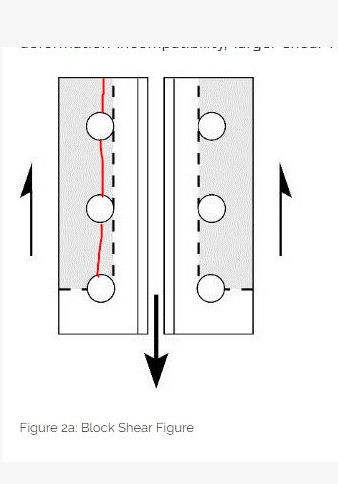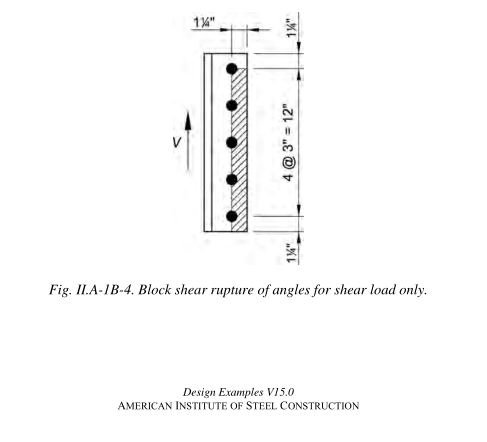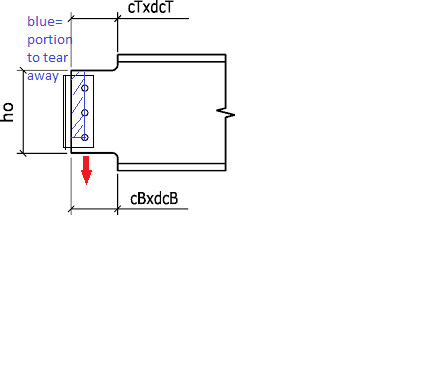Struct_Dre
Structural
- Mar 29, 2019
- 48
Hello Everyone!
I am designing an "All-Bolted Single-Angle Shear Connection" for the first time and I have no clue if I need to check for block shear rupture.
Background:
I am designing a connection for an aluminum simply supported channel beam using a single aluminum angle with stainless steel bolts for my shear connection.
The only load on the beam is the UDL across the top.
I can't tell how the angle would be susceptible to block shear rupture. Every example I've seen, there has been a tension member. But I don't have any tension members in my connection, right?![[ponder] [ponder] [ponder]](/data/assets/smilies/ponder.gif)
![[ponder] [ponder] [ponder]](/data/assets/smilies/ponder.gif)
![[ponder] [ponder] [ponder]](/data/assets/smilies/ponder.gif)
![[ponder] [ponder] [ponder]](/data/assets/smilies/ponder.gif)
Someone please help me to understand. I have been trying to figure this out forever and my project is due on Thursday.
Any help is appreciated!!
I am designing an "All-Bolted Single-Angle Shear Connection" for the first time and I have no clue if I need to check for block shear rupture.
Background:
I am designing a connection for an aluminum simply supported channel beam using a single aluminum angle with stainless steel bolts for my shear connection.
The only load on the beam is the UDL across the top.
I can't tell how the angle would be susceptible to block shear rupture. Every example I've seen, there has been a tension member. But I don't have any tension members in my connection, right?
![[ponder] [ponder] [ponder]](/data/assets/smilies/ponder.gif)
![[ponder] [ponder] [ponder]](/data/assets/smilies/ponder.gif)
![[ponder] [ponder] [ponder]](/data/assets/smilies/ponder.gif)
![[ponder] [ponder] [ponder]](/data/assets/smilies/ponder.gif)
Someone please help me to understand. I have been trying to figure this out forever and my project is due on Thursday.
Any help is appreciated!!




